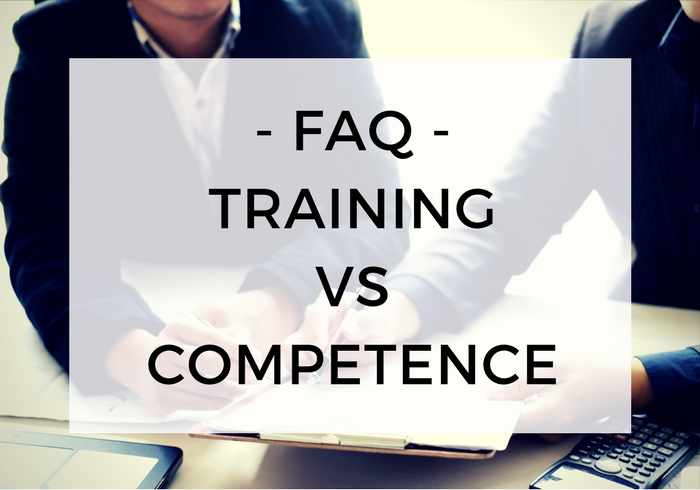Insights
What is the specific difference between training and competence and how do I go about ensuring my staff are competent to do work?
Training is the structured approach to enhance someone’s knowledge which often involves the undertaking of specific taught courses or on the job training where a person is given the knowledge needed to apply theory into practice. Often it is the combination of both. However, competency consists of a number of aspects, of which training is only one.
Others include skills, knowledge, experience appreciation and understanding of the task at hand, the surrounding environment, and a range of human factors. Training and / or qualifications alone will not necessarily mean that a person is competent. There are many situations where a persons theoretical knowledge will not be sufficient to carry themselves and their colleagues through tasks safely. It is experience that teaches us what works and what doesn’t. Without that, the wrong decisions may be made or in some cases, no decision at all!
In order to ensure competence, you must first ascertain what is expected within a particular job role and function. Often this will require the review or job descriptions, the associated roles and responsibilities contained within it and minimum standards such as formal training courses or industry expected good or best practice.
Typically, the higher the degree of risk, expertise and complexity involved in the work, the higher the competency needed. From there, you can produce a matrix which shows the core needs of the job in terms of qualifications, experience, management skills, time-served practice and so on. This is the early development of a competency matrix where job roles now have minimum requirements identified.
You now need to align people against their proposed roles and test existing competencies against them. A grading system may be used where people are scored against their competency in certain areas. This now provides an insight to their strengths and weaknesses which can then be addressed via further theory or practice as necessary, linking back to ongoing matrix and performance reviews and any planned learning and development programmes. Further information can be found in both the IOSH or CIPD websites.
A few key points – speak to your employees. What appears satisfactory in terms of competence to you may not sit as well with your staff. Never assign people to roles in which they are not competent unless suitable on the job training and/or supervision or coaching has been assigned, and don’t forget other forms of support such as the necessary resource required to fulfil the role effectively.
Once roles are agreed between you and your employee in writing, expectation from all sides now exist – meeting the needs of a training matrix is not the same as meeting the needs of a competency matrix. Finally, remember that key to anyone being competent is knowing when they are not and seeking help as a result!






